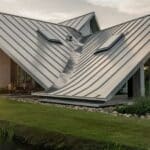A furnace in a house is a heating system that warms indoor spaces during cold weather. It works by generating heat using fuel like gas, electricity, or oil. The heat is then circulated through ducts to different rooms.
Furnaces are essential for maintaining comfort and warmth, especially in regions with harsh winters. They come in various types, such as gas, electric and oil furnaces, each with its advantages and considerations. Understanding how furnaces operate is crucial for homeowners to ensure efficient heating.
Basic Heating Cycle
The basic heating cycle of a furnace is a continuous process that ensures your home stays warm and comfortable. It starts with the thermostat detecting a drop in indoor temperature, signaling the furnace to activate. The furnace then ignites the fuel source, whether it’s gas, electricity, or oil, to produce heat.
This heat is transferred to the air via a heat exchanger, and the blower fan circulates the warm air throughout your home’s ductwork. As the warm air reaches each room, it displaces colder air, creating a cycle of continuous heating until the desired temperature is reached.
How Furnaces Work
Furnaces operate on the principle of converting energy from a fuel source into heat energy. Gas furnaces use natural gas or propane, while electric furnaces rely on electricity to generate heat. Oil furnaces burn heating oil to produce warmth.
Regardless of the fuel type, furnaces have key components like burners, heat exchangers, blowers, and ventilation systems. These components work together seamlessly to heat the air, distribute it through your home, and safely vent combustion byproducts outside. Understanding how different types of furnaces work can help you make informed decisions about your heating system.
Types of Furnaces
Furnaces come in various types, each offering unique benefits and considerations. Understanding the different types can help you choose the most suitable option for your home heating needs.

Gas Furnaces: Gas furnaces are common and use natural gas or propane as fuel. They are efficient and provide quick and consistent heating.
Electric Furnaces: Electric furnaces rely on electricity to generate heat. They are often easier to install but may be less cost-effective in areas with high electricity prices.
Oil Furnaces: Oil furnaces burn heating oil to produce heat. They are common in areas where natural gas is unavailable but require regular maintenance.
Dual-Fuel Furnaces: These furnaces can switch between gas and electric heating based on cost and efficiency, providing flexibility and energy savings.
High-Efficiency Furnaces: These furnaces are designed to maximize energy efficiency and reduce fuel consumption, leading to lower utility bills.
Multi-Stage Furnaces: Multi-stage furnaces have different heating levels to match varying heating demands, improving comfort and energy efficiency.
Variable-Speed Furnaces: Variable-speed furnaces adjust airflow based on heating needs, reducing energy consumption and improving indoor air quality.
Choosing the Right Furnace
Selecting the right furnace for your home is crucial for efficient heating and comfort. Consider the following factors when making your decision:

Fuel Type: Determine the available fuel options in your area, such as natural gas, propane, electricity, or heating oil. Choose a furnace that aligns with your fuel preferences and availability.
Efficiency Ratings: Check the furnace’s Annual Fuel Utilization Efficiency (AFUE) rating. Higher AFUE ratings indicate greater energy efficiency and lower operating costs over time.
Size and Capacity: Ensure the furnace’s heating capacity matches your home’s size and heating needs. An oversized furnace may cycle frequently, leading to energy waste, while an undersized furnace may struggle to heat adequately.
Budget Considerations: Compare upfront costs, installation expenses and long-term operating costs when choosing a furnace. Consider the potential energy savings and return on investment (ROI) over the furnace’s lifespan.
Environmental Impact: Evaluate the environmental impact of different fuel types and furnace models. Choose eco-friendly options with lower emissions and energy consumption.
Additional Features: Consider additional features such as variable-speed blowers, programmable thermostats, zoning capabilities and smart home integration for enhanced comfort.
Professional Guidance: Consult with HVAC professionals to assess your home’s heating requirements, conduct load calculations and recommend suitable furnace options.
Furnace Installation Process
Here’s an overview of the furnace installation process:

Assessment and Planning: Begin by assessing your home’s heating needs and existing HVAC infrastructure. Determine the appropriate furnace size, fuel type and location for optimal heating efficiency.
Professional Consultation: Consult with licensed HVAC professionals to evaluate your heating requirements, recommend suitable furnace models and provide an estimate for installation costs.
Delivery and Inspection: Upon delivery of the new furnace, inspect the unit for any damages or defects. Verify that all necessary components, such as the furnace, ductwork, thermostat and electrical connections, are included and in good condition.
Installation and Connection: HVAC technicians will install the new furnace according to manufacturer specifications and local building codes. This includes mounting the furnace, connecting ductwork, installing the thermostat and connecting electrical and fuel lines.
Testing and Calibration: Once installed, the furnace undergoes rigorous testing to ensure proper functionality, heating output, and safety. Technicians calibrate the thermostat, check for leaks, and verify efficient operation before finalizing the installation.
Safety Checks and Compliance: HVAC professionals perform safety checks to ensure the furnace operates safely and efficiently. They verify proper ventilation, inspect exhaust systems and test carbon monoxide detectors for optimal safety compliance.
Client Education and Documentation: After installation, technicians provide clients with information on operating the furnace, scheduling maintenance and troubleshooting common issues. They also provide documentation, including warranty details and installation reports.
Final Inspection and Approval: A final inspection is conducted to confirm that the furnace installation meets all regulatory requirements and industry standards. Once approved, the furnace is ready for use, providing reliable and efficient heating for your home.
Gas Furnace Components
Here are the main components of a gas furnace:
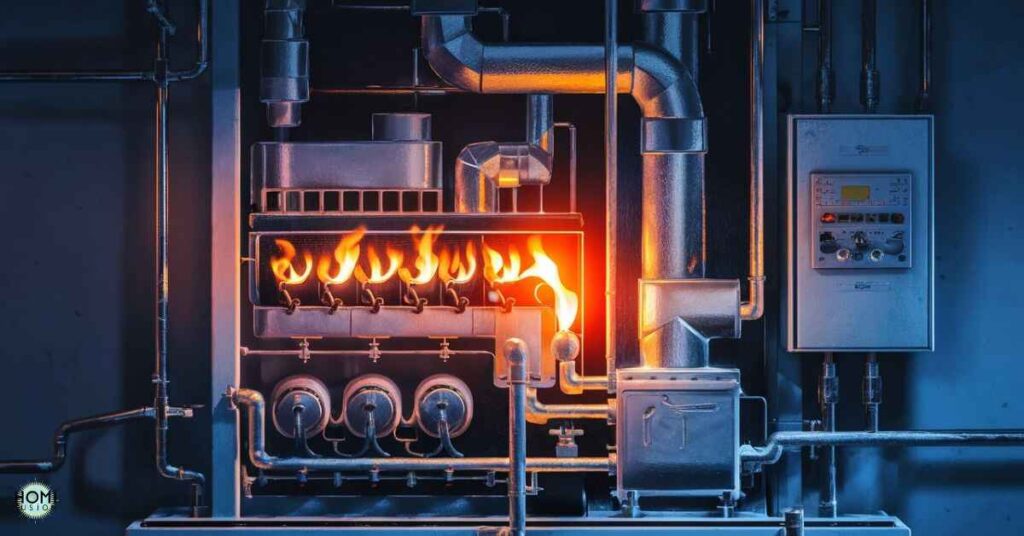
Thermostat: The thermostat serves as the control center for the furnace, allowing users to set the desired temperature. When the temperature falls below the set point, the thermostat signals the furnace to start heating.
Burner: The burner is responsible for igniting the gas fuel. Gas jets release a controlled amount of fuel into the combustion chamber, where it mixes with air and ignites to produce heat.
Pilot Light or Ignition System: Older furnaces may have a pilot light that stays lit continuously to ignite the burner when heat is needed. Modern furnaces often use electronic ignition systems that ignite the burner only when heat is required, improving energy efficiency.
Heat Exchanger: The heat exchanger is a crucial component that transfers heat from the combustion process to the air circulating through the furnace. It consists of metal tubes or coils that heat up as hot gases pass through them.
Blower Motor: The blower motor is responsible for circulating heated air throughout the ductwork and into the living spaces. It ensures even distribution of heat and maintains comfortable indoor temperatures.
Ventilation System: Gas furnaces have a ventilation system that exhausts combustion byproducts, such as carbon monoxide and other gases, safely outside the building.
Gas Valve: The gas valve regulates the flow of gas into the burner. It opens to allow gas to ignite when heating is required and closes when the thermostat reaches the set temperature.
Flue Pipe or Vent Pipe: The flue pipe or vent pipe carries exhaust gases from the combustion process outside the building. It must be properly installed and maintained to prevent gas leaks and ensure safe operation.
Safety Controls: Gas furnaces are equipped with safety controls, such as limit switches and flame sensors, to monitor temperature, gas flow, and flame presence.
Air Filter: The air filter traps dust, debris, and contaminants from the air circulating through the furnace. Regular filter replacement is essential for maintaining indoor air quality and furnace efficiency.
Smart Thermostats and Home Automation
Smart thermostats and home automation technology have revolutionized the way we control and manage heating systems in our homes. These systems offer advanced features and capabilities that enhance comfort, convenience and energy efficiency. Here’s a closer look at smart thermostats and home automation in relation to heating:
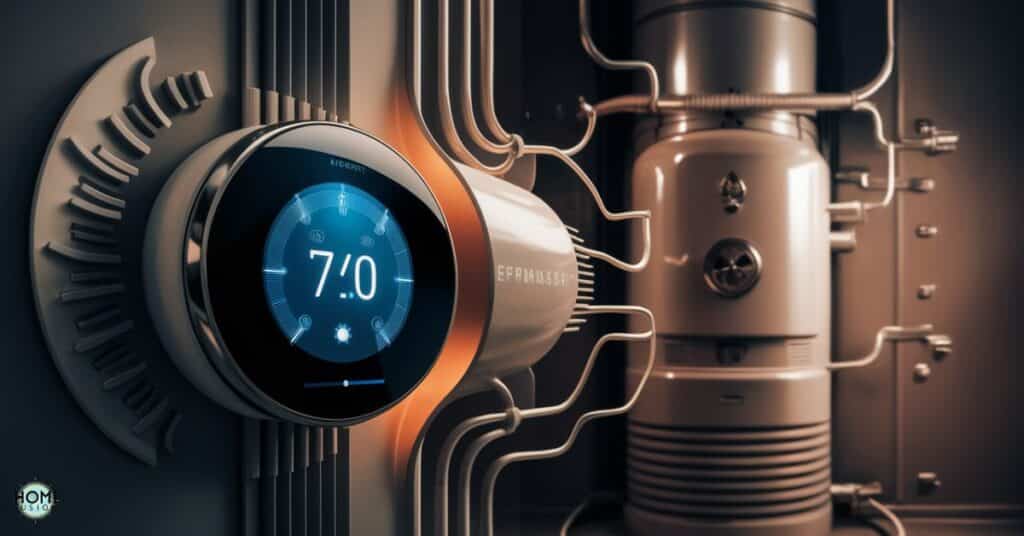
Smart Thermostats: Smart thermostats are programmable devices that allow users to set heating schedules, adjust temperatures remotely via smartphone apps. They learn user preferences over time and optimize heating cycles for efficiency.
Home Automation Integration: Smart thermostats can be integrated into larger home automation systems, allowing for seamless control of heating, cooling, lighting, and other connected devices. Integration with voice assistants like Amazon Alexa and Google Assistant further enhances convenience.
Energy Monitoring and Management: Smart thermostats provide real-time energy monitoring and management tools. It’s allowing users to track energy usage, identify trends and make informed decisions to reduce energy consumption and costs.
Geofencing and Occupancy Sensors: Some smart thermostats use geofencing technology or occupancy sensors to detect when occupants are home or away. They adjust heating settings accordingly to conserve energy when the home is unoccupied.
Adaptive Learning Algorithms: Advanced smart thermostats employ adaptive learning algorithms to analyze user behavior, weather conditions and home thermal characteristics. They automatically adjust heating schedules and temperatures for optimal comfort and energy savings.
Remote Access and Control: With smart thermostats, homeowners can remotely access and control their heating systems from anywhere with an internet connection. This remote access feature is convenient for adjusting settings while away from home.
Integration with HVAC Systems: Smart thermostats seamlessly integrate with HVAC systems, including furnaces, heat pumps and air conditioners. They optimize HVAC performance, reduce system runtime, and extend equipment lifespan.
Read this blog:
Why Is It Humidity In My House?
Zoned Heating Systems
Zoned heating systems offer personalized comfort and energy efficiency by dividing a home into separate heating zones, each controlled by its thermostat. Here’s an overview of zoned heating systems and their benefits:
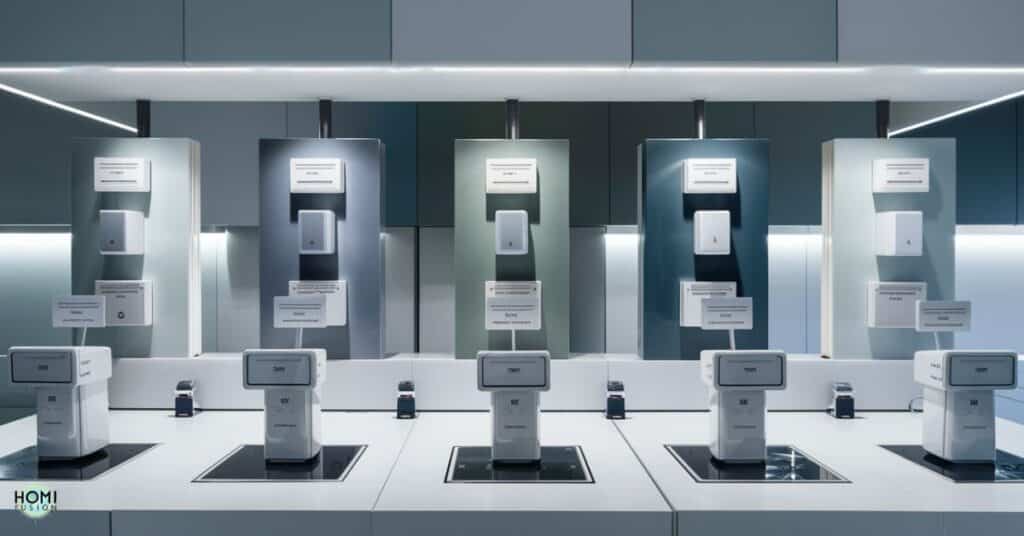
Zone Control Panels: Zoned heating systems feature zone control panels that allow users to set individual temperatures for each zone. This customization enables occupants to maintain different comfort levels in various areas of the home.
Multiple Thermostats: Each heating zone is equipped with its thermostat, typically located in the main living areas or bedrooms. Occupants can adjust temperatures independently based on their preferences and usage patterns.
Dampers and Zone Valves: Zoned heating systems use dampers or zone valves in ductwork to control airflow to different zones. When heating is needed in a specific zone, the corresponding damper or valve opens, directing warm air to that area.
Energy Savings: Zoned heating systems can lead to significant energy savings by heating only occupied zones while allowing unoccupied zones to remain at lower temperatures. This targeted heating approach reduces overall energy consumption and heating costs.
Enhanced Comfort: Zoned heating provides enhanced comfort by eliminating temperature variations and cold spots commonly experienced with single-zone systems. Occupants can enjoy consistent temperatures throughout their living spaces.
Optimized Heating Cycles: Zoned systems optimize heating cycles by focusing on heating zones that require warmth, rather than heating the entire home uniformly. This targeted approach improves heating efficiency and reduces equipment wear and tear.
Flexible Control Options: Users can control zoned heating systems via zone control panels, thermostats, mobile apps or home automation platforms. This flexibility allows for convenient temperature adjustments based on daily routines and occupancy patterns.
Efficiency and Energy Savings
Here are key factors contributing to efficiency and energy savings:
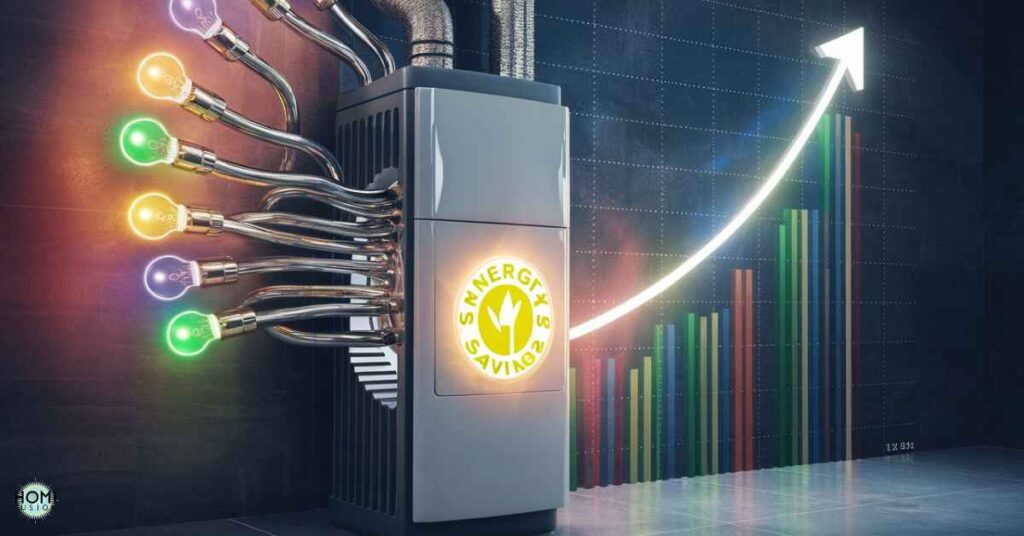
High-Efficiency Furnaces: Upgrading a high-efficiency furnace with a high Annual Fuel Utilization Efficiency (AFUE) rating can dramatically reduce energy consumption and costs.
Proper Sizing and Installation: Ensuring that your heating system is correctly sized for your home’s heating load is essential for efficiency. Oversized or undersized furnaces can lead to energy waste, uneven heating, and reduced comfort.
Regular Maintenance: Scheduled maintenance, including cleaning, inspection and tune-ups, helps keep heating systems operating at peak efficiency. Clean filters, lubricated components, and well-maintained equipment improve airflow.
Programmable Thermostats: Installing programmable thermostats allows users to set heating schedules based on daily routines and occupancy patterns. By automatically adjusting temperatures during unoccupied periods or nighttime, programmable thermostats reduce energy usage without sacrificing comfort.
Zoned Heating: Zoned heating systems offer targeted heating to specific areas or zones, reducing the need to heat unoccupied spaces. This zoning strategy optimizes energy consumption, minimizes heating cycles, and improves overall efficiency.
Energy-Efficient Practices: Maintaining moderate indoor temperatures, sealing air leaks, and insulating ductwork and walls are simple energy-saving practices.
Understanding Furnace Efficiency
Efficiency plays a crucial role in the performance and cost-effectiveness of furnace systems. It is essential for homeowners looking to optimize energy usage and reduce heating expenses.
Annual Fuel Utilization Efficiency (AFUE)
AFUE is a vital metric used to measure the efficiency of furnaces and boilers in converting fuel into heat over the course of a heating season. It is expressed as a percentage, indicating the amount of fuel’s energy converted into usable heat for the home. The remainder is lost as exhaust or waste heat:
Calculation of AFUE: AFUE is calculated by dividing the heat output during a heating season by the total energy input from the fuel consumed during the same period. For example, if a furnace has an AFUE rating of 85%, it means that 85% of the fuel’s energy is converted into heat, while the remaining 15% is lost.
High AFUE Ratings: Furnaces with high AFUE ratings, typically 90% or above, are considered highly efficient as they waste less fuel and provide more heat. These high-efficiency models help homeowners save on heating costs and reduce their environmental impact.
AFUE Variations by Fuel Type: Different fuel types, such as natural gas, propane, oil, and electricity, can impact AFUE ratings. Generally, gas furnaces tend to have higher AFUE ratings compared to oil or electric furnaces. It’s important to consider fuel availability, cost, and efficiency when choosing a furnace.
Factors Affecting AFUE: Several factors influence a furnace’s AFUE, including combustion technology, heat exchanger design, insulation, airflow optimization, and maintenance. Regular servicing and proper installation are critical for maintaining high AFUE levels over time.
Efficiency Considerations: When evaluating furnace efficiency, homeowners should weigh factors like initial cost, long-term energy savings, environmental impact, and rebate incentives for high-efficiency models. Understanding AFUE helps in making informed decisions about upgrading or replacing heating systems.
Energy Star Ratings: Energy Star-certified furnaces meet stringent efficiency standards set by the Environmental Protection Agency (EPA) and Department of Energy (DOE). These units typically have AFUE ratings of 90% or higher, indicating superior energy performance and savings potential.
Improving Furnace Efficiency: Homeowners can improve furnace efficiency by upgrading to high-efficiency, performing regular maintenance, optimizing airflow, sealing ductwork, and using programmable thermostats. These practices contribute to energy savings and enhanced comfort levels.
Ventilation System
A well-designed ventilation system is crucial for maintaining indoor air quality and optimal furnace performance. Here’s what you need to know about ventilation systems:
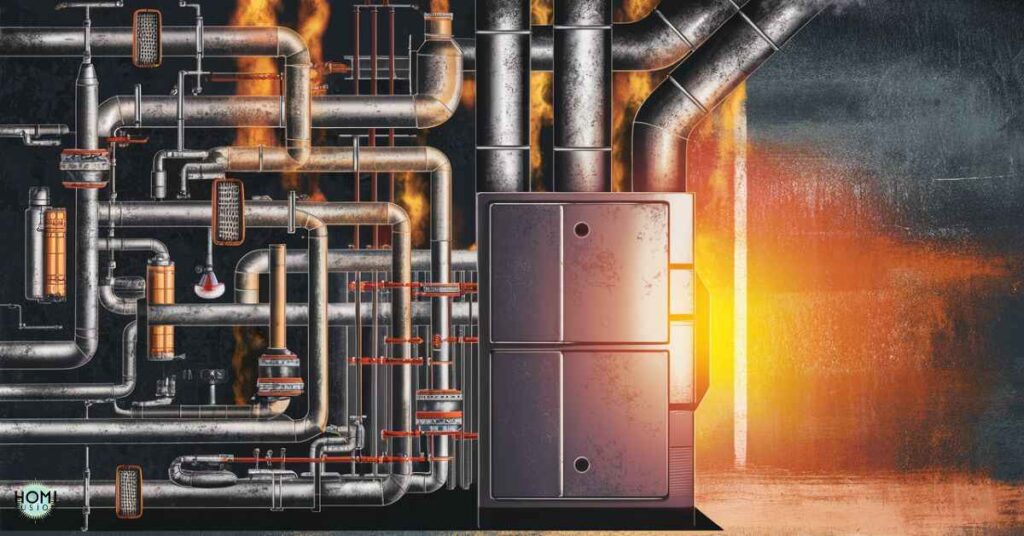
Purpose of Ventilation: Ventilation systems exchange stale indoor air with fresh outdoor air, removing pollutants, moisture and odors.
Types of Ventilation Systems:
Mechanical Ventilation: Uses fans and ducts to circulate air.
Natural Ventilation: Relies on passive airflow through windows, doors, and vents.
Components of Ventilation Systems:
Exhaust Fans: Remove air from kitchens, bathrooms, and utility areas.
Supply Fans: Introduce fresh outdoor air into living spaces.
Ductwork: Channels air throughout the home.
Ventilation Controls: Regulate airflow and humidity levels.
Benefits of Proper Ventilation:
- Improves indoor air quality by reducing pollutants and allergens.
- Prevents moisture buildup, reducing mold and mildew growth.
- Enhances comfort by maintaining balanced airflow and humidity levels.
- Ventilation System Maintenance:
- Regularly clean and replace air filters.
- Inspect ductwork for leaks and blockages.
- Schedule professional HVAC maintenance to ensure optimal ventilation system performance.
Regular Inspections and Servicing
Regular inspections and servicing are essential for maintaining furnace efficiency, performance, and safety. Here’s why regular maintenance is crucial:
Optimal Performance: Regular servicing ensures that your furnace operates at peak efficiency, reducing energy consumption and heating costs.
Safety: Inspections detect potential hazards like gas leaks, carbon monoxide leaks and faulty electrical components, preventing safety risks.
Extended Lifespan: Proper maintenance extends the lifespan of your furnace, reducing the need for costly repairs or premature replacements.
Improved Air Quality: Clean filters and components improve indoor air quality by reducing dust, allergens, and pollutants circulated by the furnace.
Professional Servicing: Schedule annual or bi-annual servicing by a qualified HVAC technician to conduct thorough inspections, clean components, and address any issues promptly.
Common Furnace Problems and Troubleshooting
Here are some common furnace problems and troubleshooting tips to help you identify and resolve issues:
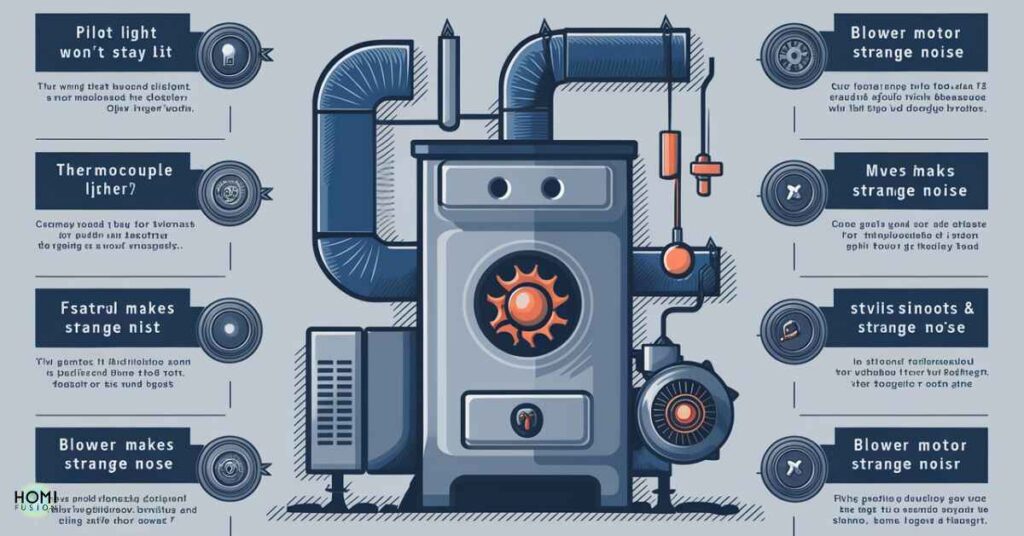
No Heat Production: If your furnace isn’t producing heat, check the thermostat settings first. Ensure it’s set to heat mode and the temperature is above room temperature. If the thermostat is set correctly, check the circuit breaker or fuse box to ensure the furnace is receiving power. Replace or reset as needed.
Frequent Cycling On and Off: A furnace that cycles on and off frequently, known as short cycling, may indicate issues with the thermostat, air filters, or airflow. Check and clean filters, ensure vents are unblocked, and verify the thermostat’s accuracy. If the problem persists, consult a professional technician to inspect and troubleshoot further.
Noisy Operation: Unusual noises like rattling, banging, or squealing during furnace operation indicate potential issues. These noises could stem from loose components, worn belts, or airflow obstructions. Turn off the furnace and inspect for loose parts, replace worn components and clear any obstructions to resolve the noise.
Pilot Light or Ignition Issues: If your furnace uses a pilot light or electronic ignition, problems with ignition can cause heating failures. Check the pilot light to ensure it’s lit and steady. For electronic ignition systems, inspect for fault codes or reset the system according to the manufacturer’s instructions.
Carbon Monoxide Leaks: Carbon monoxide (CO) leaks from a furnace pose a serious health risk. Install carbon monoxide detectors near sleeping areas and on every level of your home. If detectors indicate CO presence or you suspect a leak, evacuate the premises immediately and contact emergency services.
Thermostat Malfunctions: Inaccurate thermostat readings or malfunctions can lead to heating inconsistencies. Calibrate or replace the thermostat if it’s faulty. Consider upgrading to a programmable or smart thermostat for better temperature control and energy efficiency.
Airflow Restrictions: Restricted airflow due to blocked vents, dirty filters, or duct obstructions can strain the furnace and reduce efficiency. Regularly clean and replace air filters, clear vents of obstructions and inspect ductwork for leaks or blockages to ensure optimal airflow.
Benefits of Furnace Installation
Installing a new furnace offers numerous benefits that enhance comfort, energy efficiency and overall home heating. Here are key advantages of furnace installation:
Improved Heating Efficiency: Modern furnaces boast high-efficiency ratings, maximizing heat output while minimizing energy consumption. Upgrading to a new furnace can significantly lower heating bills and reduce energy waste.
Enhanced Comfort: Newer furnaces provide more consistent and even heating throughout your home, eliminating cold spots and ensuring optimal comfort levels in every room.
Advanced Features: Many new furnaces come with advanced features such as programmable thermostats, zoned heating options, and smart controls. These features allow for customized heating schedules, remote operation, and energy-saving settings.
Reduced Carbon Footprint: High-efficiency furnaces produce fewer greenhouse gas emissions, contributing to a greener and more environmentally friendly home heating system.
Improved Air Quality: Upgrading to a new furnace with advanced filtration systems can help remove airborne pollutants, allergens and contaminants. It enhanced indoor air quality and promoting a healthier living environment.
Enhanced Safety: Newer furnaces incorporate advanced safety features such as automatic shutoff valves, flame sensors, and carbon monoxide detectors. It’s reducing the risk of hazards and ensuring safe operation.
Long-Term Savings: While the initial cost of furnace installation may seem significant, the long-term savings in energy costs. It’s repairs and maintenance expenses can outweigh the investment over time, making it a cost-effective choice.
Warranty Protection: Most new furnaces come with manufacturer warranties that cover parts and labor for a specified period. This warranty protection provides peace of mind and financial security against unexpected repair costs.
Increased Home Value: A new, energy-efficient furnace can boost the resale value of your home. Potential buyers appreciate updated heating systems that offer efficiency, comfort, and reliability.
Quiet Operation: Modern furnaces are designed for quiet operation, minimizing noise disruptions and ensuring a peaceful indoor environment.
Also read:
Why Is My New Ac So Loud Inside My House?
Safety Considerations
Here are some essential safety precautions to ensure safe and efficient furnace use:
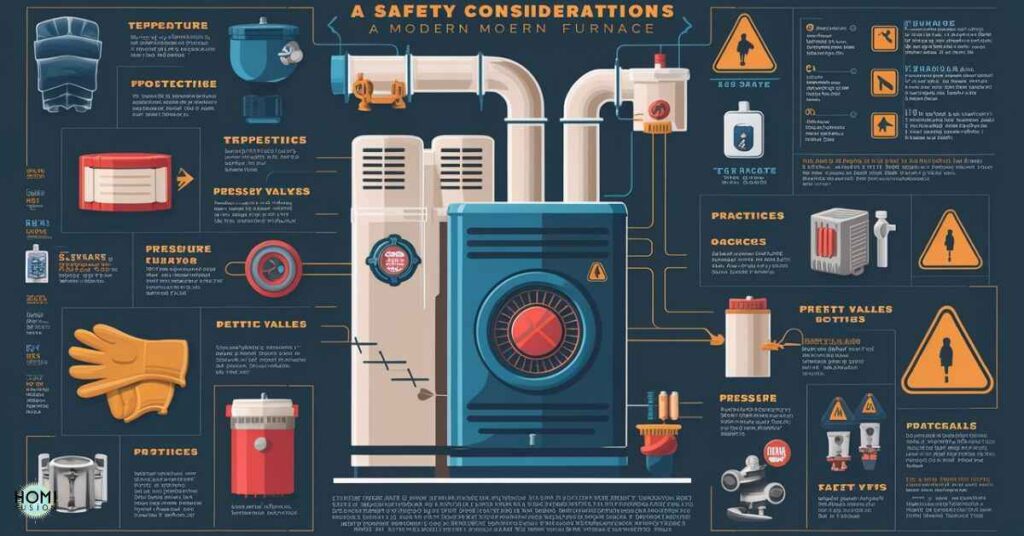
Carbon Monoxide Detection: Install carbon monoxide (CO) detectors near sleeping areas and on every level of your home. Test detectors regularly and replace batteries as needed to detect any CO leaks promptly.
Regular Inspections: Schedule annual inspections and maintenance by a qualified HVAC technician to check for potential issues, ensure proper ventilation, and verify the furnace’s safe operation.
Clear Ventilation: Keep furnace vents and intake/exhaust pipes clear of debris, snow, and obstructions to maintain proper airflow and prevent CO buildup.
Flame Supervision: For gas furnaces, ensure the flame is steady, blue, and uniform during operation. A flickering or yellow flame could indicate incomplete combustion or a ventilation issue, requiring immediate attention.
Fire Safety: Keep a fire extinguisher nearby and ensure everyone in the household knows its location and how to use it in case of a furnace-related fire emergency.
Professional Installation: Hire a licensed HVAC professional for furnace installation to ensure proper sizing, venting and safety compliance according to codes and regulations.
Regular Filter Replacement: Replace air filters regularly to maintain proper airflow and prevent dust buildup, which can strain the furnace and reduce efficiency.
Safe Ignition: Follow manufacturer instructions for ignition procedures and avoid tampering with furnace controls or attempting DIY repairs if you’re not trained or experienced.
Emergency Preparedness: Create a home safety plan that includes furnace shutdown procedures, evacuation routes, and emergency contacts. This plan should cover scenarios like gas leaks, CO detection, or furnace malfunctions.
Child Safety: Keep children away from the furnace area and educate them about the dangers of hot surfaces, moving parts and restricted ventilation.
Monitoring and Alarms: Invest in smart home devices or alarms that monitor furnace operation and detect anomalies. These devices can alert you to potential safety hazards, such as abnormal temperatures, gas leaks, or CO presence.
Frequently asked questions
What is the difference between a heater and a furnace?
A heater is a general term for devices that generate heat. On the other hand, a furnace specifically refers to a heating system that uses a central heating unit to distribute warm air throughout a building.
Is furnace heat or AC?
Furnaces generate heat, whereas air conditioners (AC) cool indoor air by removing heat and humidity.
What is a furnace and what is it used for?
A furnace is a heating system that burns fuel or uses electricity to produce heat. This heat is then distributed throughout a building to maintain a comfortable indoor temperature during cold weather.
How do furnaces work?
Furnaces work by igniting fuel (such as gas or oil) or using electric heating elements to generate heat. The heat is then transferred to the air, which is circulated through ducts and vents to warm the entire space.
Is a furnace gas or electric?
Furnaces can be either gas or electric, depending on the type of fuel they use for heat generation. Gas furnaces burn natural gas or propane, while electric furnaces use electric heating elements to produce heat.
Conclusion
Understanding the fundamentals of furnaces is essential for homeowners to make informed decisions regarding heating systems. Homeowners can choose the right furnace based on their specific needs and preferences. This includes considering factors like the basic heating cycle and the different types of furnaces available, including gas, electric, and oil options.
Efficiency and energy savings play a significant role, with factors like AFUE ratings and winterization tips contributing to optimal performance and cost-effectiveness. Regular maintenance, safety considerations and troubleshooting common furnace problems ensure safe and efficient operation throughout the heating season.
Overall, furnaces are indispensable components of home comfort, providing warmth, convenience and reliability during cold weather conditions.


